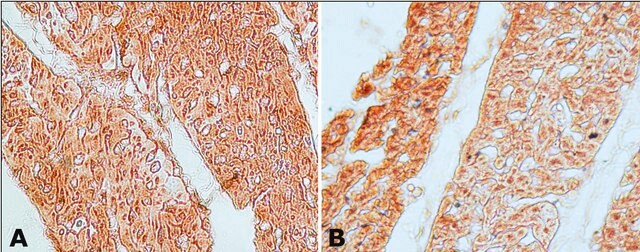07-2174
Anti-Heat Shock Protein 90α Antibody
from rabbit
Synonym(e):
heat shock protein 90kDa alpha (cytosolic), class A member 1, Renal carcinoma antigen NY-REN-38, heat shock 90kD protein 1, alpha, heat shock 90kD protein, alpha-like 4, heat shock 90kDa protein 1, alpha, heat shock protein HSP 90-alpha, Heat shock 86 kD
About This Item
Empfohlene Produkte
Biologische Quelle
rabbit
Qualitätsniveau
Antikörper-Produkttyp
primary antibodies
Klon
polyclonal
Speziesreaktivität
human, rat, mouse
Speziesreaktivität (Voraussage durch Homologie)
canine (based on 100% sequence homology)
Methode(n)
immunocytochemistry: suitable
immunohistochemistry: suitable
immunoprecipitation (IP): suitable
western blot: suitable
NCBI-Hinterlegungsnummer
UniProt-Hinterlegungsnummer
Versandbedingung
wet ice
Posttranslationale Modifikation Target
unmodified
Angaben zum Gen
dog ... Hsp90Aa1(480438)
human ... HSP90AA1(3320)
mouse ... Hsp90Aa1(15519)
rat ... Hsp90Aa1(299331)
Allgemeine Beschreibung
Spezifität
Immunogen
Anwendung
Proteintransport
Chaperone
Immunohistochemistry Analysis: 1:100 dilution from a previous lot detected Heat Shock Protein 90α in human prostate adenocarcinoma tissue.
Immunocytochemistry Analysis: 1:500 dilution from a previous ot detected Heat Shock Protein 90α in A431 cells.
Immunoprecipitation Analysis: 10 µg from a previous lot immunoprecipitated Heat Shock Protein 90A from HeLa cell lysate.
Qualität
Western Blot Analysis: 0.0625 µg/mL of this antibody detected Heat Shock Protein 90α on 10 µg of HeLa cell lysate.
Zielbeschreibung
Physikalische Form
Lagerung und Haltbarkeit
Hinweis zur Analyse
HeLa cell lysate
Sonstige Hinweise
Haftungsausschluss
Sie haben nicht das passende Produkt gefunden?
Probieren Sie unser Produkt-Auswahlhilfe. aus.
Lagerklassenschlüssel
12 - Non Combustible Liquids
WGK
WGK 1
Flammpunkt (°F)
Not applicable
Flammpunkt (°C)
Not applicable
Analysenzertifikate (COA)
Suchen Sie nach Analysenzertifikate (COA), indem Sie die Lot-/Chargennummer des Produkts eingeben. Lot- und Chargennummern sind auf dem Produktetikett hinter den Wörtern ‘Lot’ oder ‘Batch’ (Lot oder Charge) zu finden.
Besitzen Sie dieses Produkt bereits?
In der Dokumentenbibliothek finden Sie die Dokumentation zu den Produkten, die Sie kürzlich erworben haben.
Unser Team von Wissenschaftlern verfügt über Erfahrung in allen Forschungsbereichen einschließlich Life Science, Materialwissenschaften, chemischer Synthese, Chromatographie, Analytik und vielen mehr..
Setzen Sie sich mit dem technischen Dienst in Verbindung.